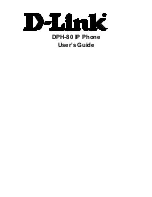
269
C
H
10
FCC HEARING-AID COMPATIBILITY (HAC)
REGULATIONS FOR WIRELESS DEVICES
Hearing devices may also be rated. Your hearing device manufacturer
or hearing health professional may help you find this rating. Higher
ratings mean that the hearing device is relatively immune to
interference noise. The hearing aid and wireless phone rating values
are then added together. A sum of 5 is considered acceptable for
normal use. A sum of 6 is considered for best use.
In the above example, if a hearing aid meets the M2 level rating and
the wireless phone meets the M3 level rating, the sum of the two values
equal M5. This should provide the hearing aid user with “normal usage”
while using their hearing aid with the particular wireless phone. “Normal
usage” in this context is defined as a signal quality that is acceptable
for normal operation.
The M mark is intended to be synonymous with the U mark. The T mark
is intended to be synonymous with the UT mark. The M and T marks
are recommended by the Alliance for Telecommunications Industries
Solutions (ATIS). The U and UT marks are referenced in Section 20.19
of the FCC Rules. The HAC rating and measurement procedure are
described in the American National Standards Institute (ANSI) C63.19
standard.
For information about hearing aids and digital wireless phone
• FCC Hearing Aid Compatibility and Volume Control
http://www.fcc.gov/cgb/dro/hearing.html
• Gallaudet University, RERC
http://tap.gallaudet.edu/DigWireless.KS/DigWireless.htm
• Self Help for Hard of Hearing People Inc. [SHHH]
www.hearingloss.org/hat/TIPWirelessPhones.htm
• The Hearing Aid Compatibility FCC Order
http://hraunfoss.fcc.gov/edocs_public/attachmatch/
FCC-03-168A1.pdf
Summary of Contents for PN-820
Page 10: ...8 MEMO...
Page 24: ...22 C H 1 MEMO...
Page 50: ...48 C H 3 MEMO...
Page 108: ...106 C H 4 MEMO...
Page 150: ...148 C H 5 MEMO...
Page 260: ...258 C H 9 MEMO SDGSDG...
Page 280: ...278 MEMO...
Page 281: ...279 MEMO...
Page 282: ...280 MEMO...












































